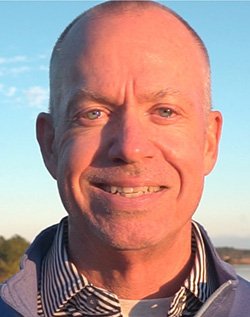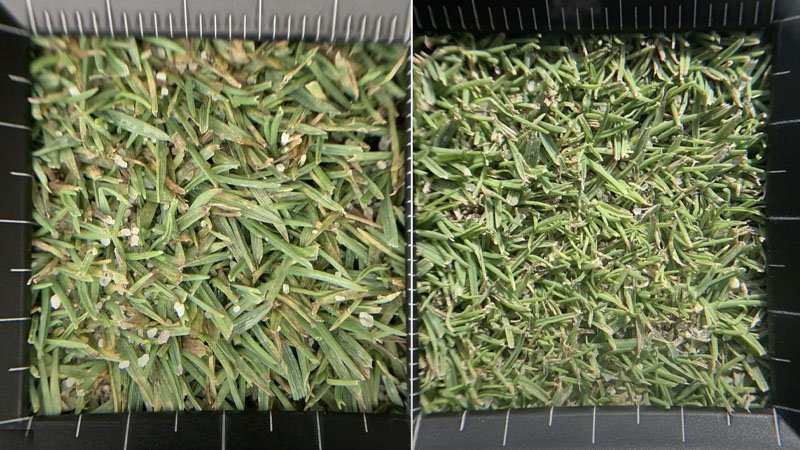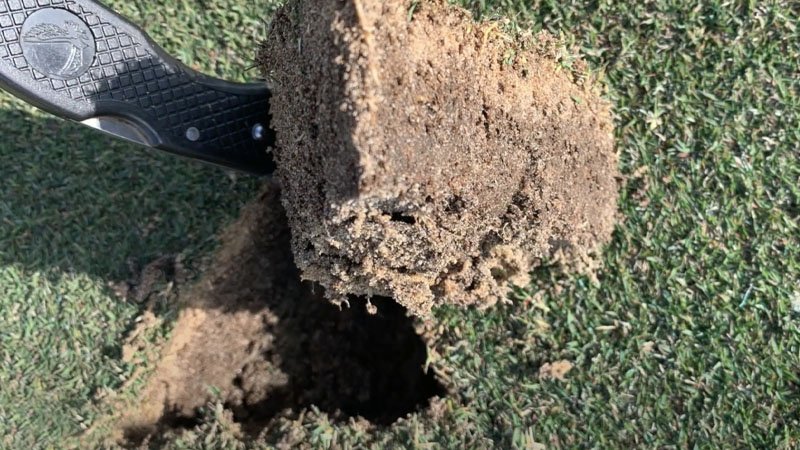
Cutler Robinson, CGCS
As a superintendent, Cutler Robinson was all too familiar with trying to schedule fertilizer applications based on weather that had already occurred. He thought there had to be a better way. Then the idea hit him: Applications might be more effective leading to a healthier plant if he somehow could tap future forecasts as a basis for product applications.
After three years of development, the result is Predict-N7, an app-driven platform from Roanoke, Virginia-based Predictive Agronomics that utilizes thousands of data points, including site-specific weather information to match nitrogen management with products offering the proper amount of phytohormones and metabolites.
Robinson, who graduated from Virginia Tech's turfgrass management program and also earned a master's degree in plant physiology in Blacksburg, described Predict-N7 as a math-driven, science-driven and site-specific weather data-driven tool that combines future forecast data with specific input from the superintendent to produce unique management based on the probability of conditions that are likely to occur rather than those that have already happened.
"It incorporates seven-day forecasts before they occur, not Growing Degree Days after they occur," Robinson said.
"It doesn't tell superintendents what to do. They tell it what they want, and it makes recommendations."

For example, relying on plant growth regulators to slow growth of putting green turf can increase reliance on nitrogen, Thompson said.
"Give the plant more N than it needs, there is more accumulation of organic matter, which is where disease is born," he said. "This model tells you the right amount of N for the right amount of growth between spraying intervals."
In a testimonial on Robinson's web site, Mike Nowicki, director of agronomy at Victoria National Golf Club in Indiana said Predict-N7 has worked for him on different turf types and different soils.
"I've used the Predict-N7 model on two different golf courses, one with A4 and USGA construction, the other with Triple 7 and California construction," Nowicki wrote. "In each case, the Predict-N7 has helped me provide elite putting surfaces that withstand high heat, humidity, and traffic at very fast putting speeds."
Two years of Beta testing during R&D and real-world use by superintendents have shown, Robinson said, that Predict-N7 can result in aerifying less often because less organic matter is created at the surface level.
Matthew Wharton, CGCS at Idle Hour Country Club in Lexington, Kentucky said he was just beginning to look at Predict-N7 for use at Carolina Golf Club in Charlotte when he changed jobs.
"I too have been searching for a way to break the PGR addiction," Wharton said. "Before the season started, I uprooted and took the position in Kentucky, and immediately began the steps to put the model in place at my new facility. Unfortunately, I do not have the ability to compare results this year to years past as I would have, had I remained at my previous facility. But I do believe the model is working based on turf performance this season, and I am excited to see how things perform next season."

Developed with business partners Chris and Cindy Appel, Predict-N7 can be used to help manage bentgrass, Pos annual, and ultradwarf Bermudagrasses, including TifEagle, Champion and Mini Verde.
Incorporating thousands of data points including weather and other inputs such as soil tests into the equation along with other data, such as the types of results a superintendent is trying to produce will not only help determine how much N to spray, it can also recommend other nutrients the plant needs at a specific time. It also means that multiple properties within close proximity of one another could have vastly different spray programs because of differences like soil make up, micro climates, turf type and more.
"When you incorporate everything into the algorithm then add in what the superintendent sees on his golf course, you can have two golf courses a mile apart and they will have two different spray models," Robinson said. "You could even have two different models on the same golf course. Every property is going to have a different model," Robinson said.
"What if we sprayed exactly what the plant needs every time the superintendent fills the spray tank? That's pretty exciting."
With 24 years as a superintendent under his belt, Robinson knows all about managing turf under difficult circumstances. His last stop before giving up being a superintendent to focus on Predict-N7 was at Bayville Golf Club in Virginia Beach, where he says he was the first superintendent to get A4 bentgrass in 1995.
"This program is driven by science and data and what the superintendent sees on his golf course," Robinson said. "Not blanket calendar-driven treatment."


